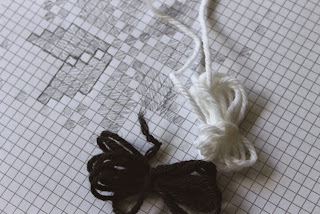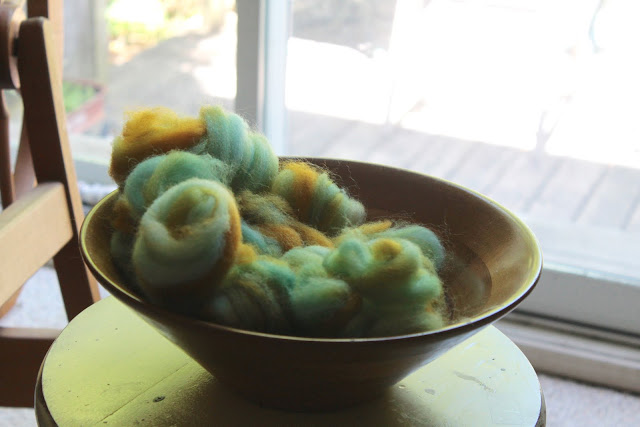Julia knits Scandinavian Style
Before reading this book, I could look at a design and say, "oh that looks very Norwegian/Swedish/generic Scandinavian." However, it's so interesting to know how each country really adapted the knitting tradition, what the wool trade was like in these countries, and know more specific details about their techniques. Quite a lot to be learned, actually. Something thrills me about knowing how Danes cast on for their knitting.

As mentioned, I've just finished the chapter on Norwegian traditions. One of the things that I love about Norwegian stranded knitting is the simplicity of it all. Not in the sense that it's less sophisticated than fair isle knitting in terms of colour palettes, but that the easy and clean style that we have come to associate with Scandinavia is not absent from knit wear; clear, neutral colours and sharp patterning are the order of the day.

I played around with colours and charts as I read this chapter, but ultimately settled on the purl relief pattern for my project, since I've actually done more stranded knitting than textured.
This easy diamond pattern is what I settled with. I wish that I'd finished reading the chapter in it's entirety, because I only learned about the double-purl stitch after I started my project. Textured knitting like this used double-purl stitched (the stitch is wrapped before it's purled, giving the illusion of two purls stacked on each other due to the extra bar) amongst a sea of stockinette stitch.

Reading this chapter corresponded with me finishing a new batch of handspun (the brown), so it seemed to perfect for my Norway-inspired mittens. Ain't it purdy? I've been pleased with my handspun recently, because it's becoming so much more regular and even.
Also, some Scandi Knit trivia:
Now off to Sweden, at least in a book. What to knit now?!?
- Stranded "fair-isle"-like patterns emerged in Scandinavia between 1820-40. Really not that old.
- The woman who created "Selbu" knitting was named Marit Guldsetbrua Emstad. She made the first selbu knits under commission from her employer. Selbu started out as a sort of "Sunday best" knitwear. Selbu knitting was so widely exported, that others copied the style, and when their knitting decreased in quality, "Selbu" came to mean shabby and poor quality knitting. Thankfully that's been reversed among modern knitting.
- Norwegian jerseys, like this pattern, are called lusekofte.
- Another unique knitting tradition from Norway are Krotasokkar, cabled stockings.




Comments
Post a Comment